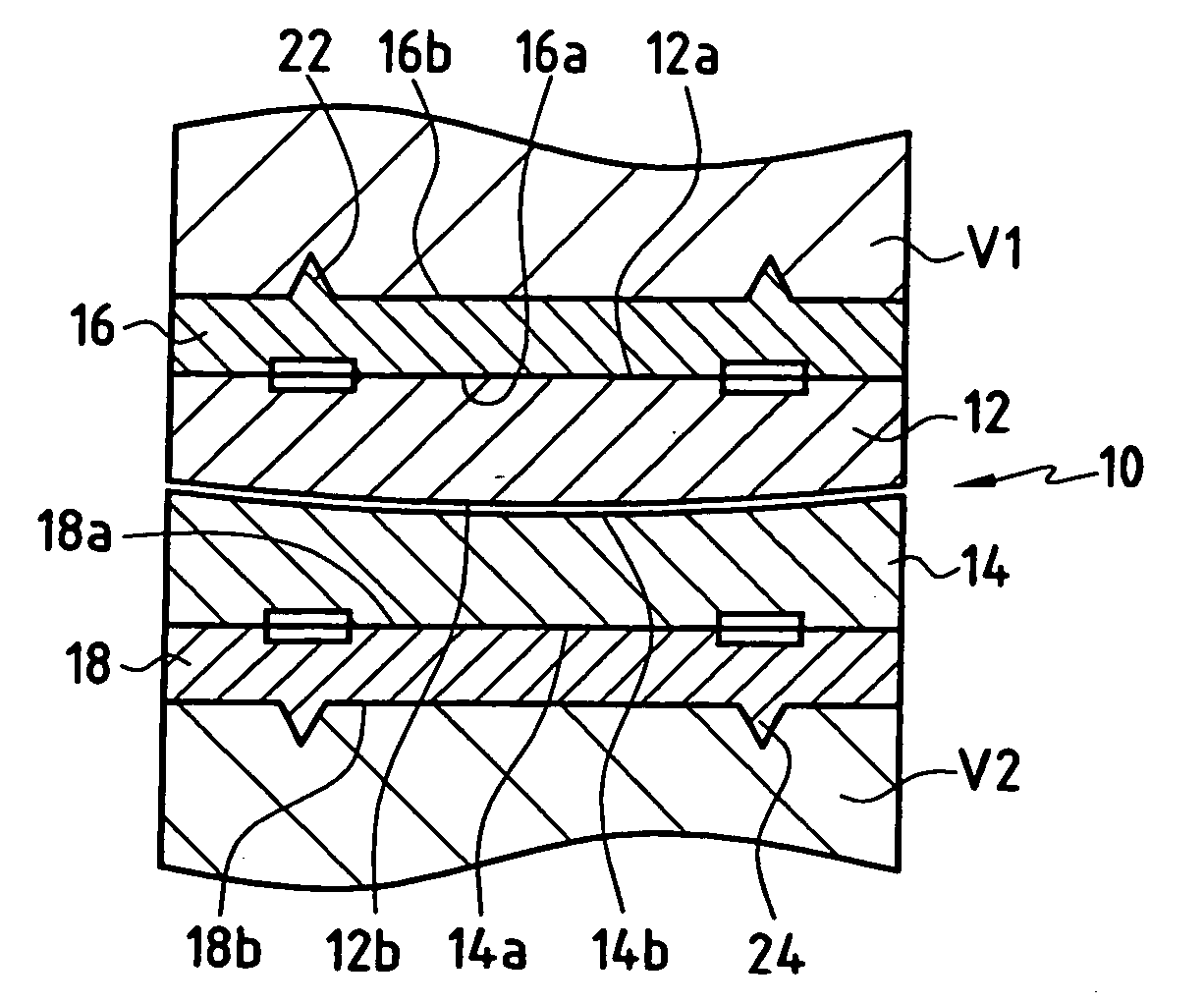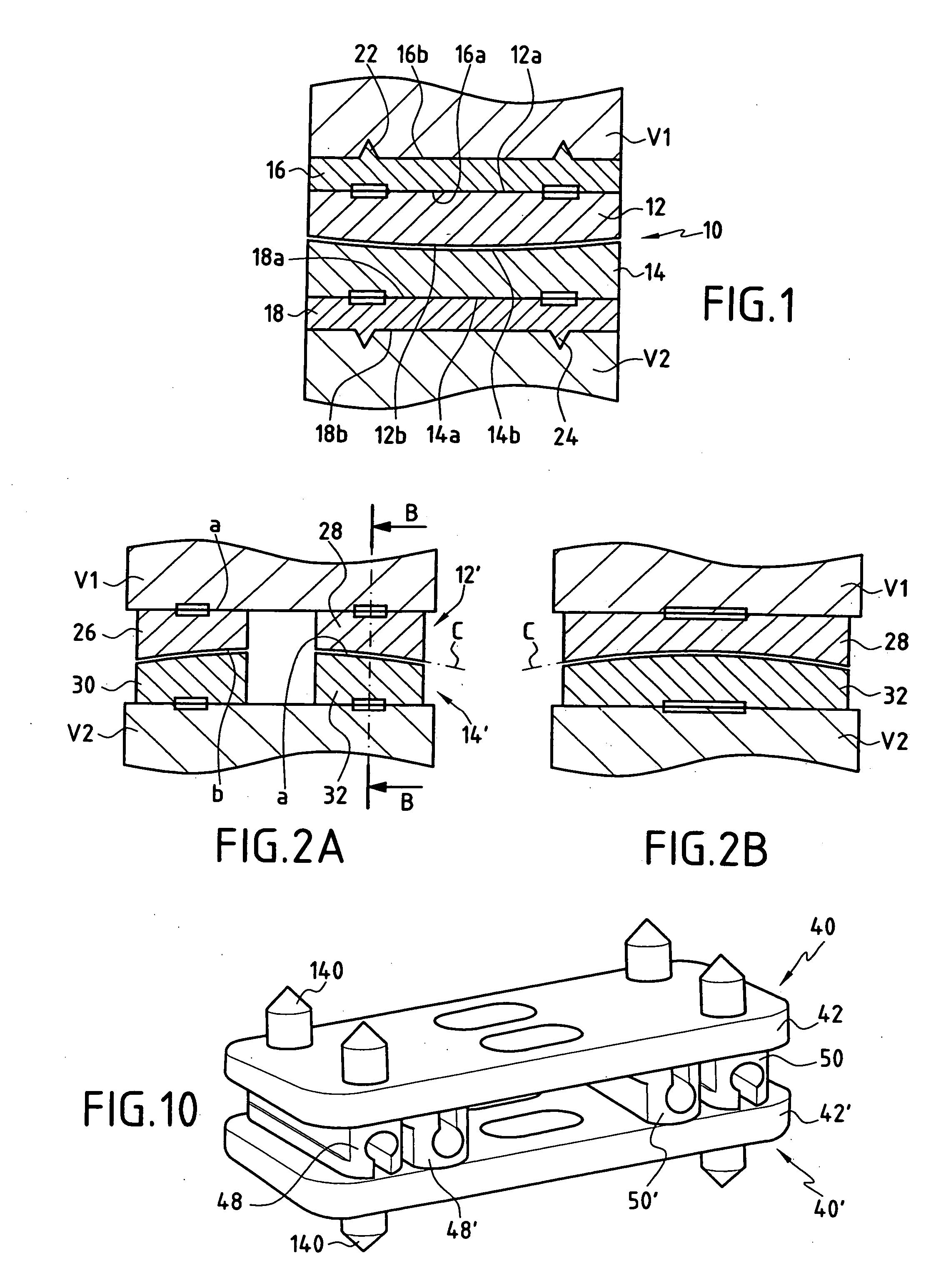Intervertebral disk prosthesis
a technology for intervertebral disks and prostheses, which is applied in the field of intervertebral disk prosthesis, can solve the problems of reducing the thickness of the disk, severe pain sensation, and limiting the patient's ability to move, and achieves a large amount of relative mobility
- Summary
- Abstract
- Description
- Claims
- Application Information
AI Technical Summary
Benefits of technology
Problems solved by technology
Method used
Image
Examples
first embodiment
[0077] With reference to FIGS. 3, 4, and 5, the intervertebral disk prosthesis is described.
[0078] In FIGS. 3A and 3B, there can be seen a fixing element referenced 40. The fixing element 40 is constituted by a plate 42 having an anchoring face 42b provided with two transverse ribs 44 and 46 which constitute parts for anchoring in a vertebra. The co-operation face 42a of the plate 42 is fitted with two locking members for locking to the prosthesis element. Each of the locking members 48 and 50 is constituted by a strip 54 extending parallel to the ribs 44. The right section of each strip 54 is generally T-shaped, the strip comprising two flanges 56 and 58 in its portion that is furthest from the plate 42. In addition, in order to enable the strips to deform elastically to a certain extent, each of them has a longitudinal slot 60.
[0079] In FIGS. 4A, 4B, and 4C, there can be seen a prosthesis element 62 which is constituted by two separate parts 64 and 66. The active faces b of the p...
second embodiment
[0089]FIGS. 7A, 7B, and 7C show the prosthesis elements of the prosthesis constituting the The prosthesis element 100 is constituted by a massive part whose co-operation face a presents a shoulder 102 defining a setback portion 104 with the length of the setback portion 104 corresponding to the width of the plate 82 of the fixing element 80. A locking member 106 projects from the setback portion 104. The shoulder 102 corresponds to the thickness of the plate 82. This locking member which is preferably circularly symmetrical about the axis xx′ is constituted by a head 108 and a body 110. The diametral section of the locking member 108 is of a shape which corresponds to the shape of the T-groove 88 formed in the plate 82 of the fixing element 80. The active or contact face b of the prosthesis element 100 comprises a substantially plane portion 112 and a portion 114 in the form of a concave spherical cap.
[0090] The second prosthesis element 120 is identical to the prosthesis element 1...
PUM
 Login to View More
Login to View More Abstract
Description
Claims
Application Information
 Login to View More
Login to View More - R&D
- Intellectual Property
- Life Sciences
- Materials
- Tech Scout
- Unparalleled Data Quality
- Higher Quality Content
- 60% Fewer Hallucinations
Browse by: Latest US Patents, China's latest patents, Technical Efficacy Thesaurus, Application Domain, Technology Topic, Popular Technical Reports.
© 2025 PatSnap. All rights reserved.Legal|Privacy policy|Modern Slavery Act Transparency Statement|Sitemap|About US| Contact US: help@patsnap.com



